Site of Mercers First School/The Little Green Schoolhouse
Introduction
Text-to-speech Audio
As industry developed small communities sprung up around sawmills, lumber camps and railroad stops. Some of these places grew into the modern communities we know today, others disappeared with time. One of the very first institutions to be established in these communities was usually a school. This location is the site of the first school to be built in Mercer, know as "The Little Green Schoolhouse" due to its small size and unique color. It was overseen by Charles Moffit, an early pioneer and educator. It ran from 1894 until 1914 when another school was constructed to better suit the growing population.
Images
Little Green Schoolhouse is circled in blue, logs for saw mill tacked across the street from school in the foreground. Community Building in background.
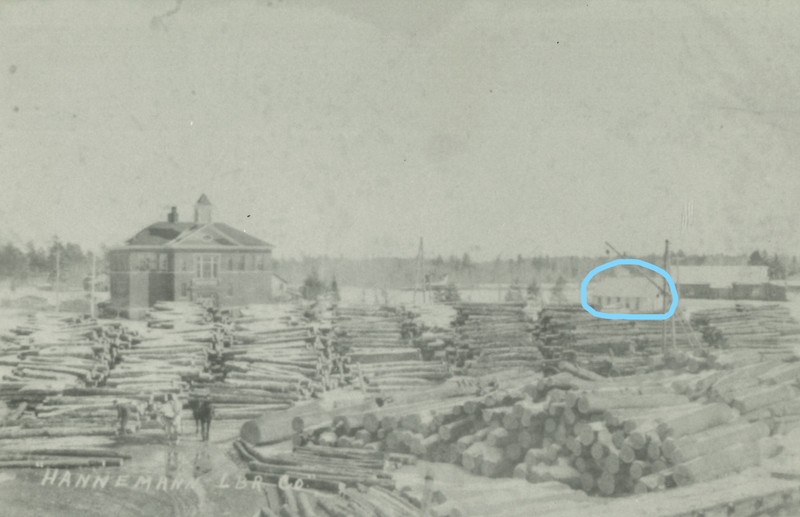
Little Green Schoolhouse is circled in blue
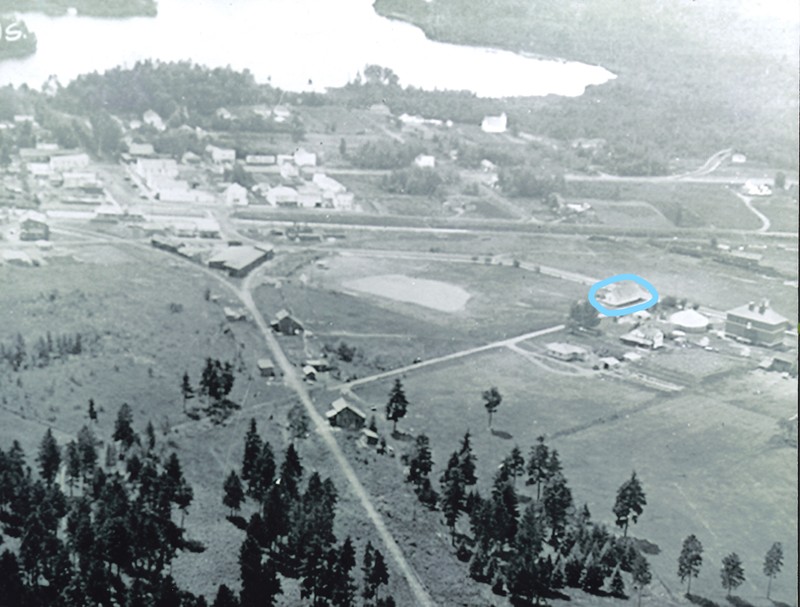
Students outside the Little Green Schoolhouse in Mercer. Circa 1900s
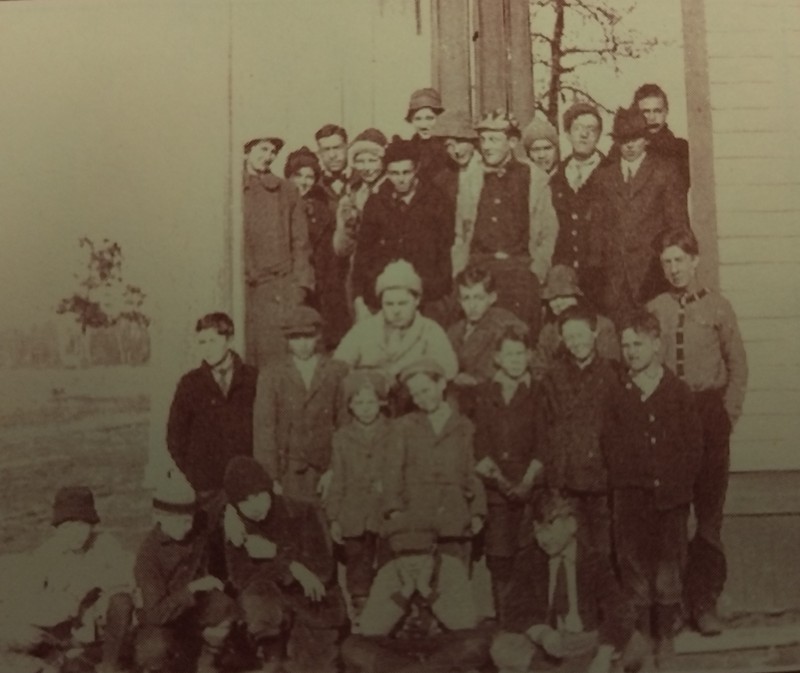
Mrs. Everson and her students outside the Little Green Schoolhouse in Mercer. Circa 1910
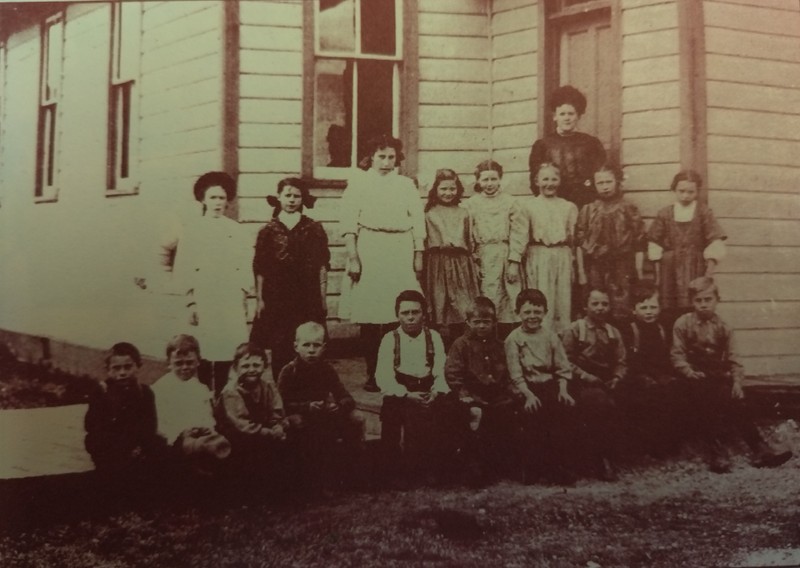
Mercer's Little Green Schoolhouse, note the water pump outside. Teachers were required to port hot water from home to be used for priming the pump in winter.
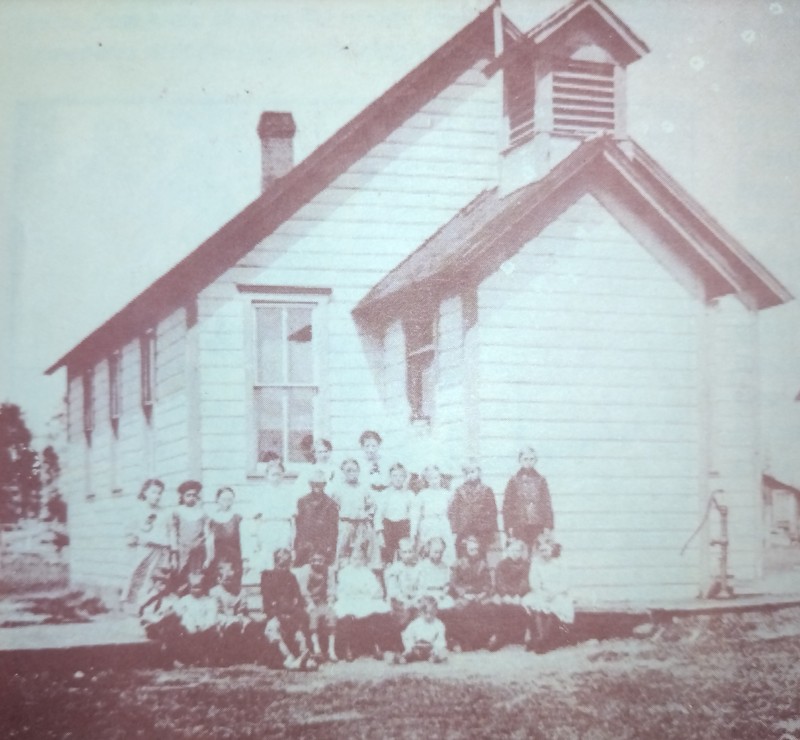
Backstory and Context
Text-to-speech Audio
Marge Helmers was a student in The Little Green Schoolhouse and long time Mercer Resident, in an interview she remembered; "The Little Green Schoolhouse where the playground is. I think there is one telephone pole where there used to be a road going through behind where the community building is....it was very drafty."
Shirley Sleight attended the Little Green Schoolhouse and described her experience there,"...one room building with a cloak rack. There were four tall windows on one side and a huge round wood burning heater in the center. The body of the wood stove was encircled with a wide ring of chrome that students could rest their feet on to warm them. Our teacher was 19 years old and boarded at a farm about a mile from school...There were no lights in the school, just one kerosene lamp, and on dark stormy days we went home early. It was four miles for my sister and me, by snowshoes or skis, before grandpa built his school bus. When it was very cold, and we never knew just how cold it was, the wind would blow snow under the windows so the sills and the floor had a few inches of snow on them. Those of us who sat in the two rows closest to the windows wore out outdoor clothes. When we got too stiff to work, we would trade places with the two rows close to the stove. Other days when it uncomfortably cold but not bitter cold, the teacher would put on a marching record on the portable windup Victrola that she kept at School. We would all stop working and march until we were warm. There were 13 kids in eight grades. We were taught reading, writing, arithmetic, (the higher grades had algebra), history, geography, English literature, and a little music and art. Those teachers were the greatest, most dedicated I have ever known and they knew how to talk to and deal with such a wide range of ages and ethnic backgrounds. We learned through osmosis, learning from the grades ahead of us without realizing it."
Charles Moffit was the Supervisor of Mercer's first school and the first teacher was Fanny Folsom from Hurley. Miss. Folsom was an educated young single woman and boarded at a nearby farm, from which she walked, skied or snowshoed. Mrs. Everson was also an early teacher at The Little Green Schoolhouse and was the wife of Ed Everson the local businessman/politician. The building functioned from 1894 to 1914, eventually a new school was needed to serve the growing community. After the new school was built 7th and 8th grade was still taught in the old school for a few years, latter it was used as the cafeteria/kitchen. The Hasenburg Family moved there to reside when William Hasenburg grew ill so medical help could be more accessible. Unfortunately in the end it was not enough to save him and in January 1929 William died in the old school building. William Hasenburg was a skilled painter had previously painted the mural on the ceiling of the Ironwood Theater.
Nothing from the original school remains to this day. Its location is known through old pictures and interviews with staff and students. Its old location is bare ground between the Community Building and the current school. Due to it being near the playground recess area, we encourage people to visit outside of school hours in order to respect the privacy children and staff.
Sources
Mercer Area Historical Society. Mercer Remembers...Pictures & Stories of its past. Mercer , Wisconsin. 1999.
The Life of the Kannenburg Building. Mercer, Wisconsin. 2004.
Techmann, Catherine . Rooted in Resources 1893-1993. Edition 1993. Friendship, Wisconsin. New Past Press INC, 1993.
Mercer Area Historical Society, Mitch Babic Collection
Mercer Area Historical Society, Mitch Babic Collection
Mercer Remembers...Pictures & Stories of its Past
Mercer Remembers...Pictures & Stories of its Past
Mercer Remembers...Pictures & Stories of its Past
